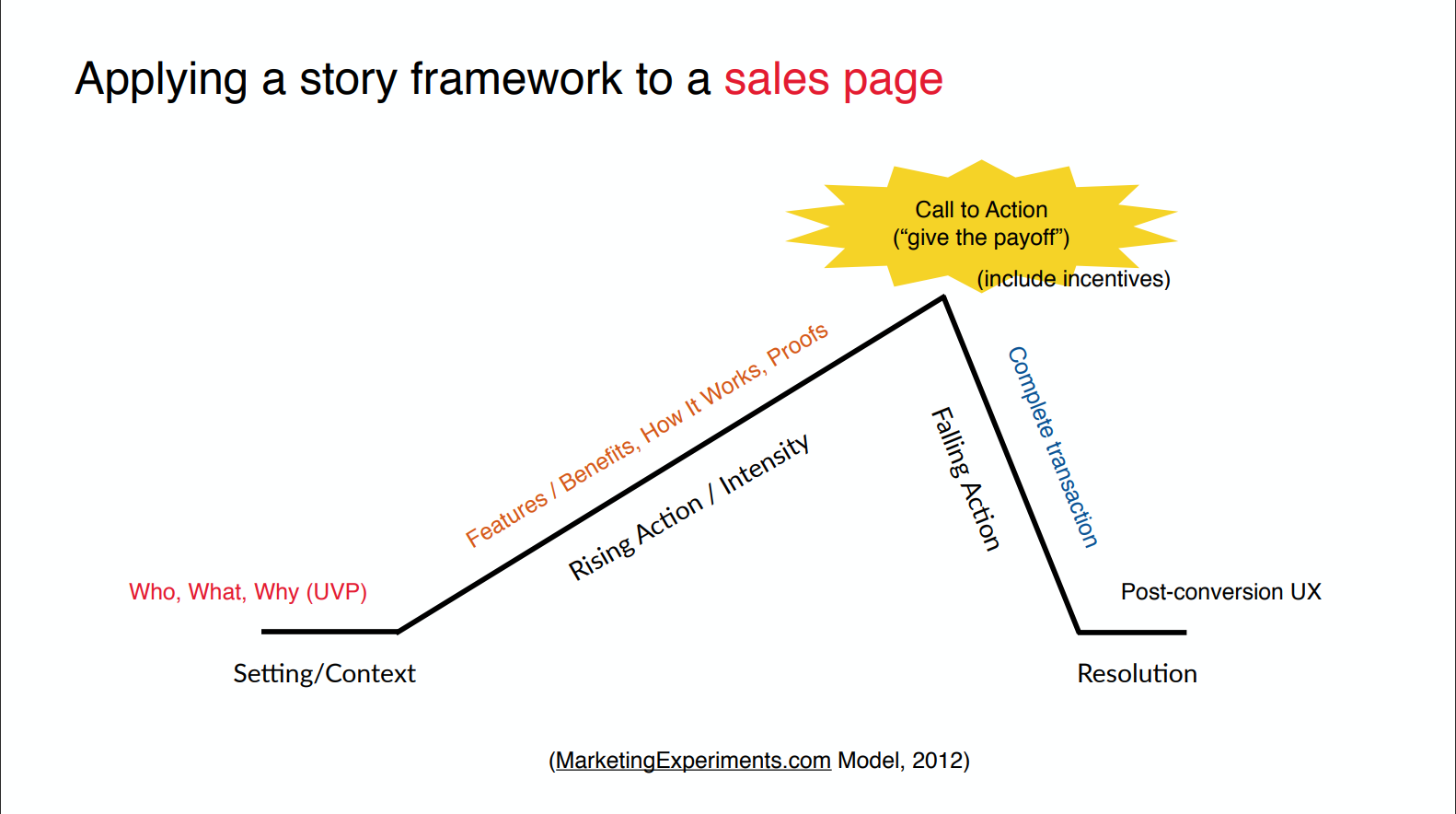-
Pingback: Editing & Punching Up Your Sales Copy - Jibran Yousuf Khan

Understanding Message Hierarchies
In this article, we will sharpen our understanding of Message Hierarchies.
Before we dive deeper into the product messaging, I would like to mention that the following content is based upon the learnings that I did during the tenth Week of Conversion Optimization, my mini degree course at CXL Institute, led by Peep Laja & the team.
- Understand how the fundamentals of the story can greatly improve your sales page’s persuasive impact.
- Construct a killer value proposition for your product with some strategically collected voice-of-customer data.
- Use Google Spreadsheets to instantly transform dry survey response data into a complete messaging hierarchy for any sales page.
Understanding Storytelling & Message Hierarchies
Why is the story critical to selling? You may have probably come across several talks that really get into this, the power of storytelling, all that kind of stuff. And the reality is, like, the reason that story is critical to selling is that that’s how humans think.
Human thoughts tend to arrange themselves in a story. So synchronizing your copy, to the visitor’s thought sequence, often requires a story-based framework. And when we say story-like, we’re really talking about the beginning, middle, and end. That’s just how we tell stories. That’s how we communicate. It’s just the way we roll.
So, if we want to go back to what a classic story framework looks like, we are taking a time warp back to 12th grade English class. Where you see a narrative arc like this. Where we talk about starting with setting the context, setting the scene, right. What we’re really talking about is laying out the setting or the context. Once you’ve laid out the setting of the context, the who, what, where, when, you can get into the full story narrative.

Where you start talking about rising action and intensity, things start happening, tension starts building, until you get to some kind of climax or central conflict in the story. Then there’s the falling action. There’s the resolution of the story and it ends, right. We’re all very, very familiar with this. And if you don’t necessarily think that humans think in a natural story-based framework, I want you to read the next six words and tell me what comes into mind for you when you read them.
goodbye mission control, thanks for trying.
Six words, it is one sentence. But when you read that sentence, you instantly get, almost an entire story from that. Which is, there was a journey out into space. Something went horribly wrong, and now the astronaut is just flying off into the middle of nowhere. Great story.
But you can see, human brains just have a natural tendency to just fill in those gaps, we fill in that story. You know, if you put the right words, in the right order. So, if you apply that story framework to a sales page, what do you get? Well, you need to set the context, first, right? You need the setting. We look at setting down the, for who, what are you selling, and why, the value proposition right. Here is when message hierarchies become relevant.
You want to get that down, early. The moment people enter your sort of, story framework. From there, you get your features and benefits. You get to start diving into how the solution relates to that setting. And you start to build some excitement around the solution that you’re offering. This promise that you’re offering is right. So, it’s not so much tension, you don’t want to think about it in terms of tension because we’re not making people go through conflict, right. In the conventional sense of story. But we are trying to build excitement and anticipation around achieving a goal, right.
So, we get into that rising intensity of laying out features and benefits, how it works, proofs, that kind of thing. The climax is when you pitch the sale. When you actually make the offer and you are getting them to act, you are getting them to overcome their own sense of inner tension and saying, “Yes, I’m going to go” and I’m going to buy this right now,” right. So, you put out your call to action, you want to get them to act. You want to give them a payoff. Right?
So, when we say the call to action, a lot of people say the call to action in marketing, it’s become almost a blanket term or a very vague term that doesn’t really mean anything anymore we just hear it, and it’s just part of the buzzwords that we hear in marketing But, really what we’re trying to do is like, give the payoff like, you’ve built the anticipation towards the acquisition of some awesome thing.
Now, the call to action is where you make that gateway where they can say, “Oh, this is where I go, to actually” achieve all this, you know, to get the result” of what you’ve been telling me about. “And then, of course, you have incentives that you want to include, at that moment to help get them over the hurdle. You have the actual falling action which is them just filling out the form and going through the process of following through on their commitment to act. And then finally the resolution is your post-conversion user experience. That is again marketing experiments way, of sort of, framing your sales narrative in the terms of story.
One way that I love, is just thinking about it like this; you’re setting and context is where you start with the why. If you can’t convince someone or if you don’t start with the why, why should I be listening to you? Why are you even talking to me? What is this about? You don’t set that context, you’ve lost them, right.
So, you need to start with the why. Then you want to let them try. If you’ve intrigued them with the why, and the context makes sense to them, and the promise, the value proposition that you put out to them is relevant to them, then the natural thing they’re going to think is; Okay, all right, tell me more. Right? Gimme the gist, gimme more details of what you’re offering. Right? So, you’ve got to think in terms of why, and then try.
Try all the content that you use to kind of, get them to understand the product, and understand how it achieves their goals for them. And then you end with the buy. Allow them to act. Give them the opportunity, the gateway, the portal, to be able to get the thing that you’ve just…
The solution that you’ve just offered them. Right? So, it’s very simple.
Why try, buy, and that’s really what you need to be thinking about in terms of the flow of the story when it comes to a sales narrative. I hope you now have a better understanding of message hierarchies. Read more about Editing & Punching Up Your Sales Copy.